Wildfires are another reason that every house should be Passivhaus
That campfire smell is particulate pollution caused by climate change. You’re breathing the car industry, the fossil fuel industry, the cement kilns, the gas companies, and Doug Ford.
Toronto and much of the northeast of the US smell like a campfire today, thanks to wildfires in Quebec and northern Ontario. PM2.5 particulate pollution is reaching up to 120 micrograms per cubic meter; most studies suggest that 12 ug/m3 is considered safe and that “if the level goes to or above 35 μg/m3 during a 24-hour period, the air is considered unhealthy and can cause issues for people with existing breathing issues such as asthma.” The World Health Organization recommends an upper limit of 25 micrograms (µg) per m3 averaged over 24 hours.
Governments have long downplayed the danger of PM2.5; indoor levels are barely regulated. Historically, we were all swimming in a miasma of particulates from cars, coal, and cigarettes. It was part of our lives. The natural gas industry is still fighting any regulation of PM2.5 because it would be the end of gas stoves in homes. They are joined by the petroleum institute, cement associations, and the wood industry; nobody wants serious regulation of PM2.5 because then you are regulating fossil fuels, and we can’t have that. And so people keep dying from it; as Paul Billings of the American Lung Association told Inside Climate News, “Why should the public care? Because particulate matter, PM pollution, soot, whatever you want to call it, it kills people. And it kills tens of thousands of people every year.”
So now we are all swimming in particulates from forest fires, and are likely to continue to, of and on, for years to come. And since the governments are not going to regulate this (because they would have to ban fossil fuels and end climate change) we are on our own. We are going to have to keep it out of our homes.
The best way to keep particulates out of our homes is to seal them tightly against air infiltration, and have controlled, filtered ventilation, as you get with the Passivhaus or Passive House system. Chie Kawahara described how her Passivhaus handled fires in California in 2018:
"The tightly sealed enclosure, about 10 times tighter than conventionally built houses, keeps random air from coming in from random places. The heat recovery ventilator provides us with continuous filtered fresh air. Only during these extended bad air quality days do we need to pay special attention to our ventilation system to keep our indoor air clean."
In 2020, Cameron Munro and Joel Seagren monitored Passivhaus designs compared to conventional “leaky” homes during the Australian brushfires and reported their results in Renew Magazine.
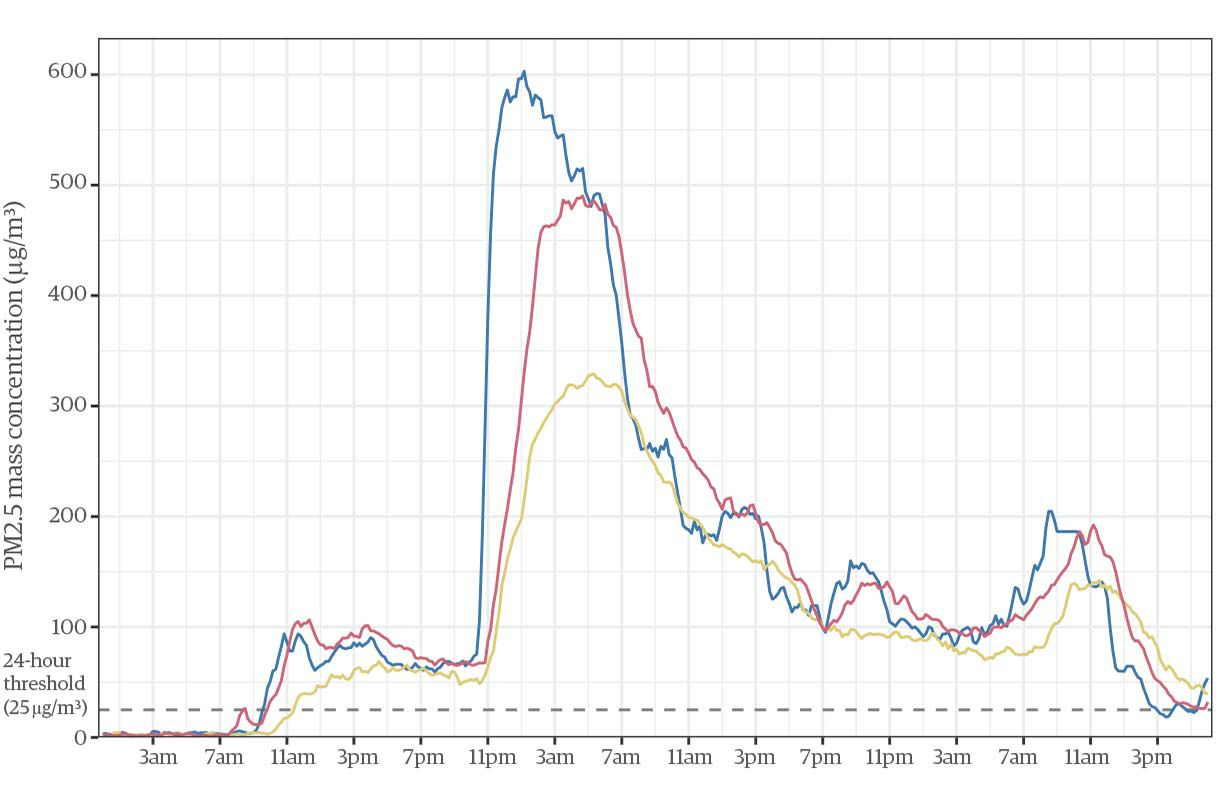
They found that airtight house with a rating of 1.2 air changes per hour at 50pa (twice as leaky as a Passivhaus) had 30% lower levels than the neighbouring leaky house.
Then they tested an even tighter house, with 0.11 air changes per hour, and found that the levels of PM2.5 were cut in half.
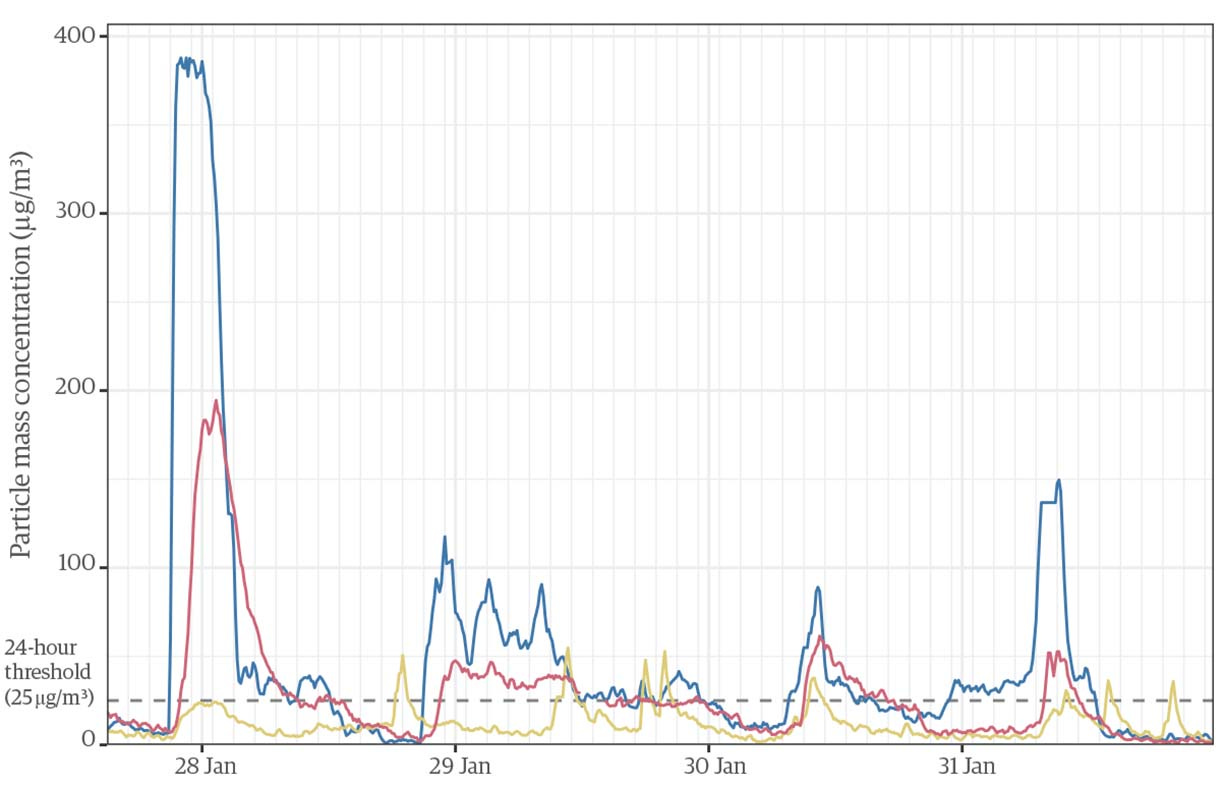
Then they put a HEPA filter into the system and the levels dropped to under the 25 threshold. But they note that “HEPA filters can capture over 90% of smoke-sized particles and the resulting particulate levels shown in Figure 4 are consistent with this level of filtration. However, this performance comes at a cost. Increased pressure drop across the filters will increase fan power consumption and can increase noise as the fans have to work at a higher speed to compensate.”
In the short term, many of the measures we took to fight airborne COVID will help fight PM2.5; get out the Corsi-Rosenthal boxes and put on a mask.
In the longer term, Munro and Seagren conclude with recommendations for dealing with PM2.5 that should be followed everywhere, including–
“measures such as avoiding all combustion (no gas or wood burning indoors), cleaning regularly and avoiding hard-to-clean surfaces such as carpet will help to reduce exposure. Shifting to using electric vehicles or, better, riding or walking, can reduce particulate levels as transport is a major contributor to human-induced particulates in built-up areas. Wood fires should also be avoided in urban locations as these not only introduce particulates inside a home but also spread across the neighbourhood and will infiltrate into neighbouring homes.”
I would add that every new building should be Passivhaus certified, both to protect the inhabitants from particulate pollution, but also to fight climate change by reducing carbon emissions. These fires are not random; “Across the world and by almost any metric that we look at, wildfires are growing worse,” Kristina Dahl, principal climate scientist for the climate and energy program at the Union of Concerned Scientists, told CTV News. “They are burning larger areas, they're burning more severely, they're burning over a longer fire season in mountainous regions, they’re burning at higher elevations where it's typically cooler as well.”
In Ontario, we have to recognize that Doug Ford is actually killing us. He cancelled 758 renewable energy projects which will now have to be replaced with gas plants, which directly produce particulates during combustion and indirectly by contributing to global heating and more forest fires.
Toronto writer Shawn Micallef has often complained that the city is governed by a bunch of white men with backyards and summer cottages. They are the kind of men who drive SUVs up to Muskoka for the summer and don’t think climate change is going to affect them. They might find out soon that they are coughing through this summer at best or that their cottages are going up in smoke as these fires spread at worst, and that their world is not as safe as they thought.
We can no longer downplay PM2.5. As noted in Treehugger, “research from Harvard University, University of Birmingham, the University of Leicester, and University College London has concluded that 18% of global deaths in 2018, more than 8.7 million people, can be attributed directly to particulate matter smaller than 2.5 micrometers (PM2.5) emitted when burning fossil fuels.”
This is what you are breathing in that campfire smell. You’re breathing the car industry, the fossil fuel industry, the cement kilns, the gas companies, Doug Ford and everyone contributing to climate change. We have to stop them before they burn everything down.




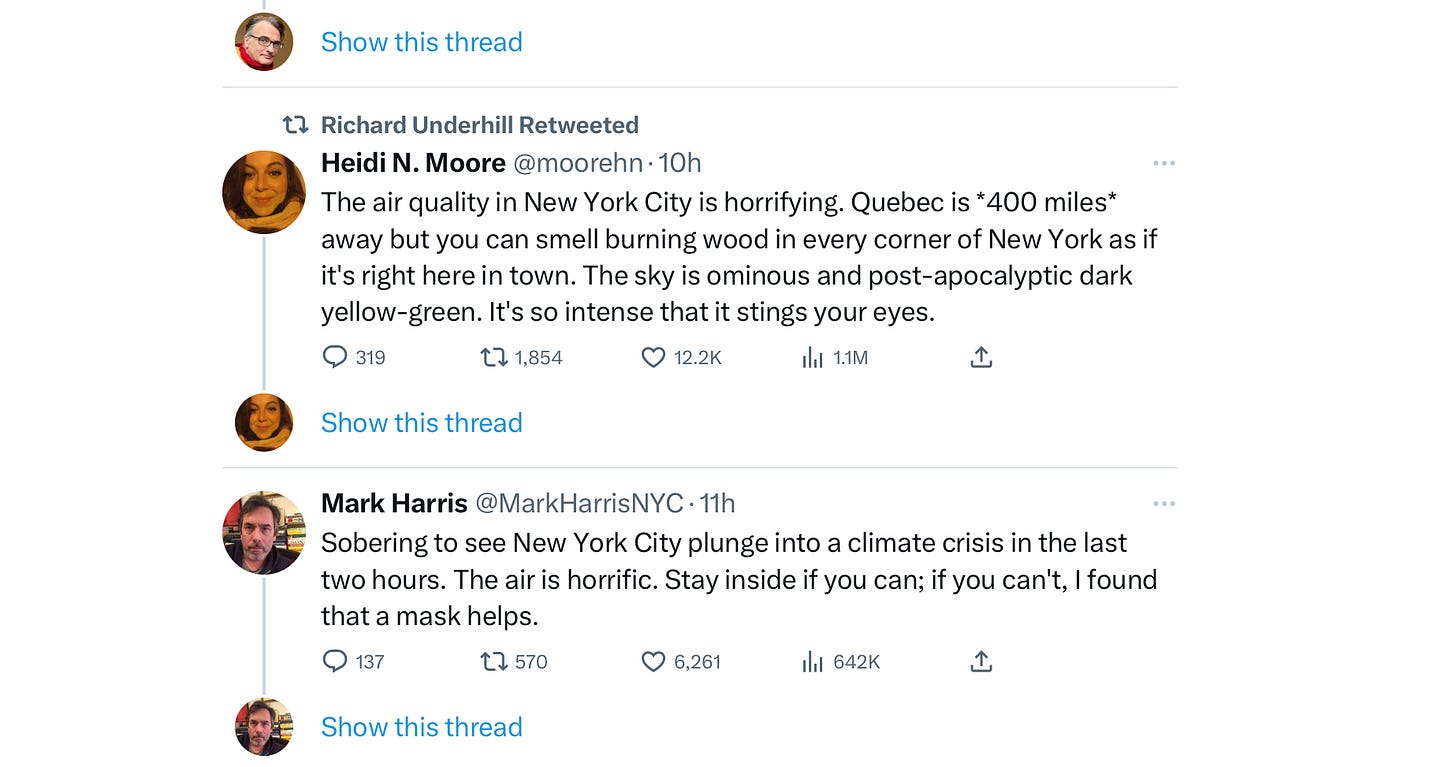
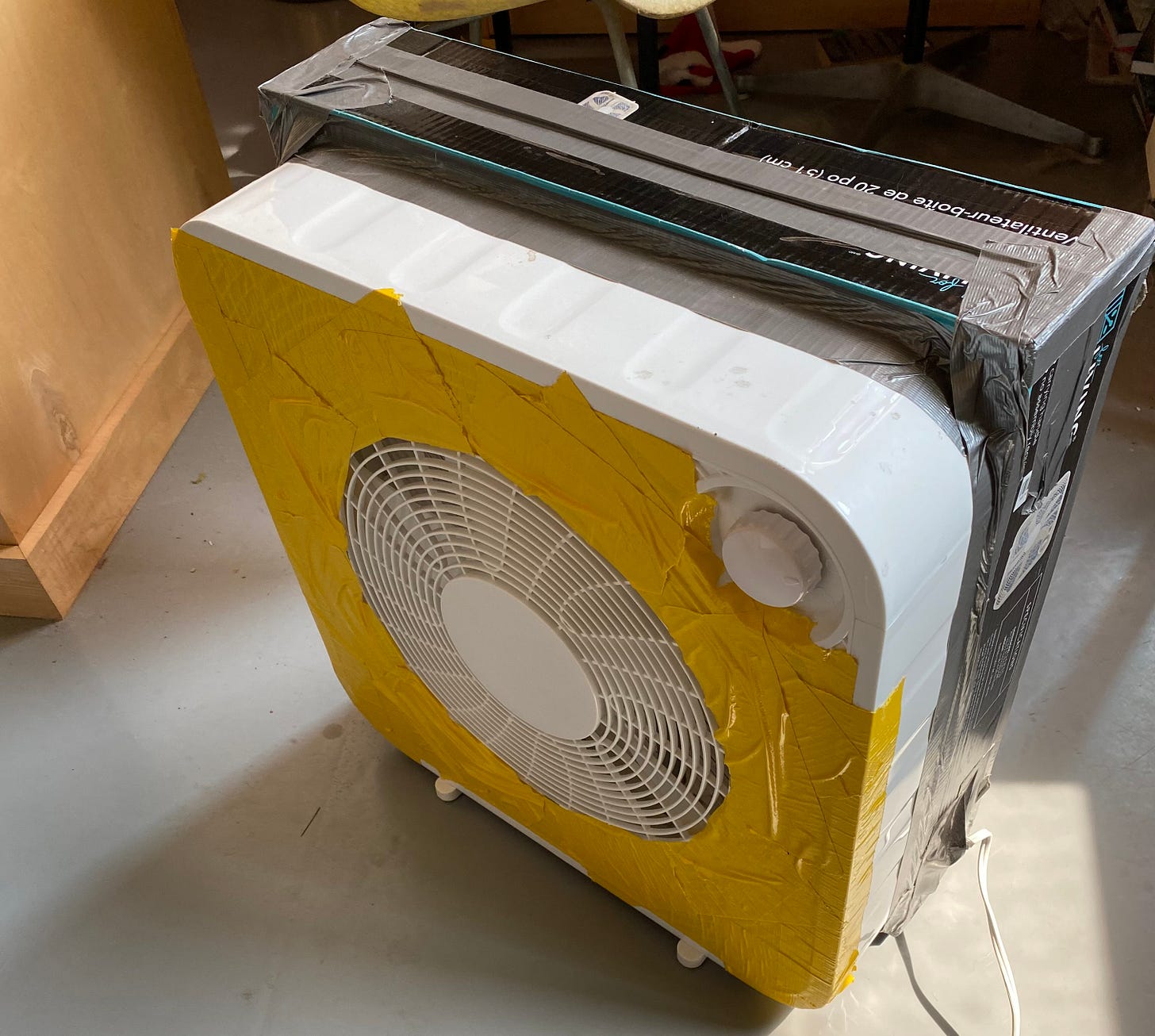
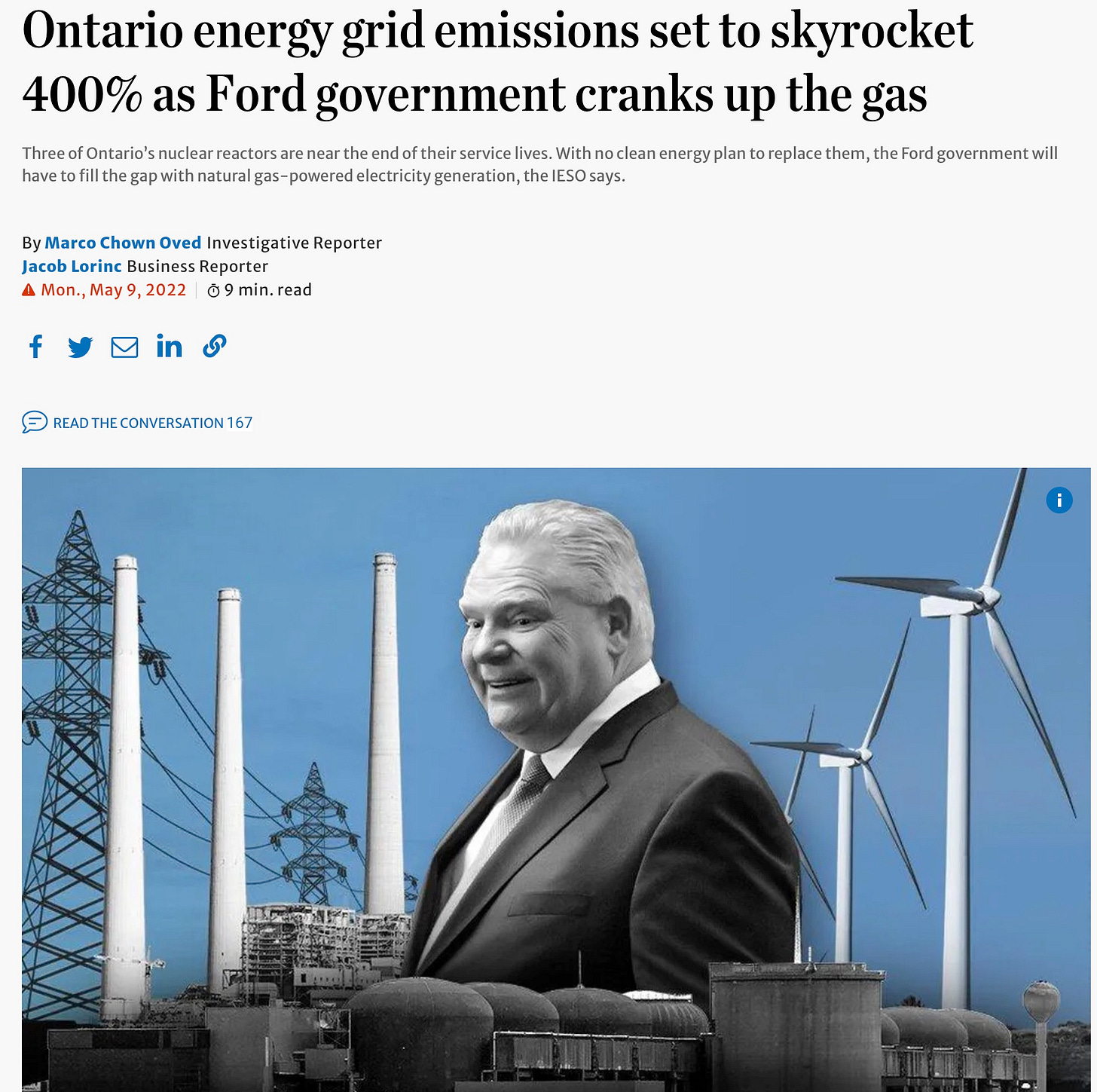
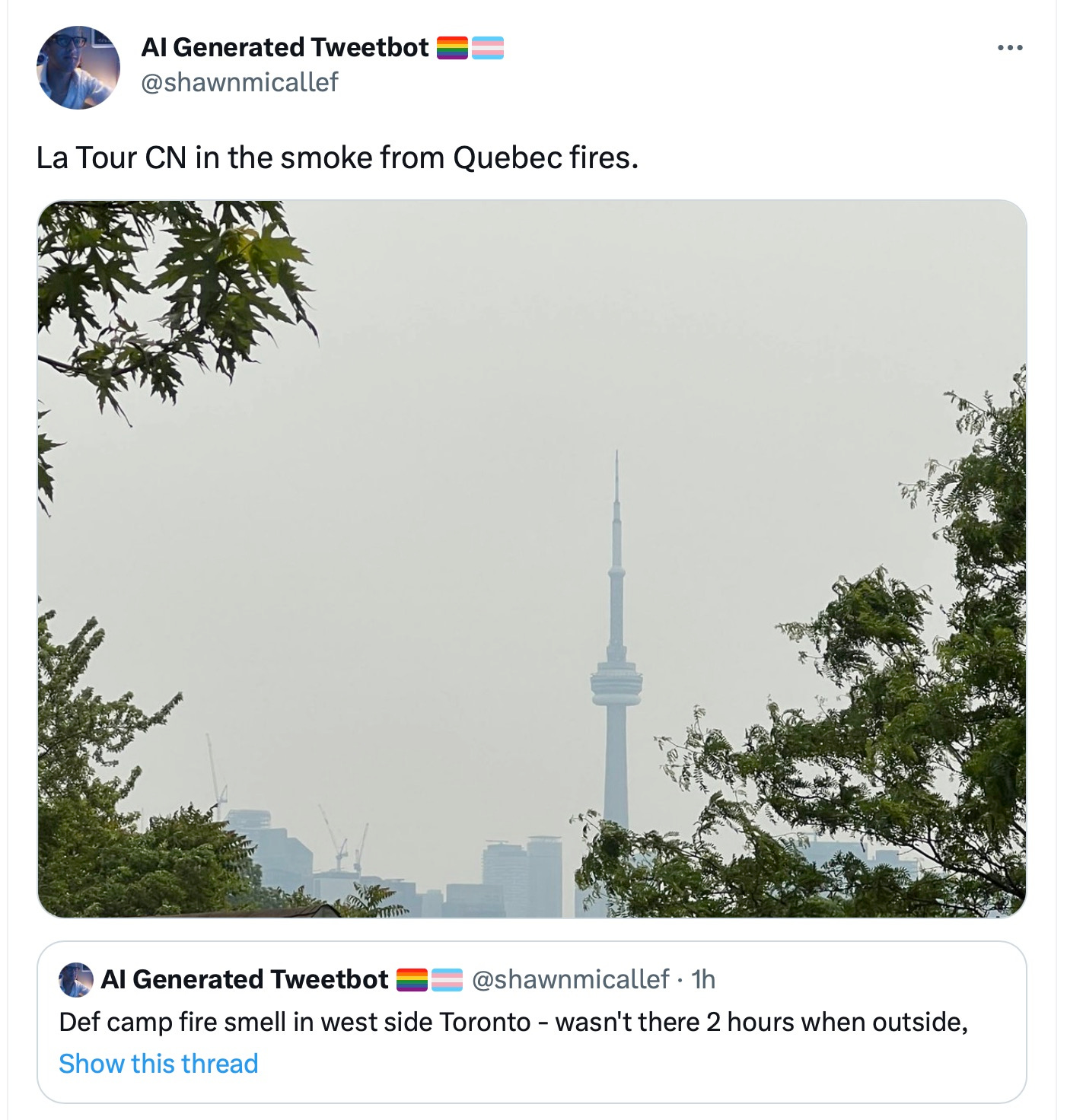
I believe the consensus is that much of the problem is not the simple explanation (CLIMATE CHANGE!!!) but more of "are we managing the forests, especially the forest floor, correctly".
For some tree species, fires are a necessary tool for propagation (e.g., letting seed out of cones). Just letting diseased trees and detritus build up on the forest floor (i.e., keep it wild and pristine!) only adds fuel to a forest fire no matter it is lit by careless campers, arsonists, or by lightning.
It's one reason why privately owned lands suffer less than government ones - the owners do the maintenance to keep their forests healthy to avoid the loss of that property that could have gone to a value-added purpose (building supplies, furniture, and the like) instead of only creating smoke.
How much of Canada's forests, Lloyd, are collectively owned through the Government? By not taking care of that collective resource, isn't Government, then, at fault?
Thanks, Lloyd. Smelling the smoke on Cape Cod. We need more people like you
to spread the news. Toronto needs to kick that fool to the curb.